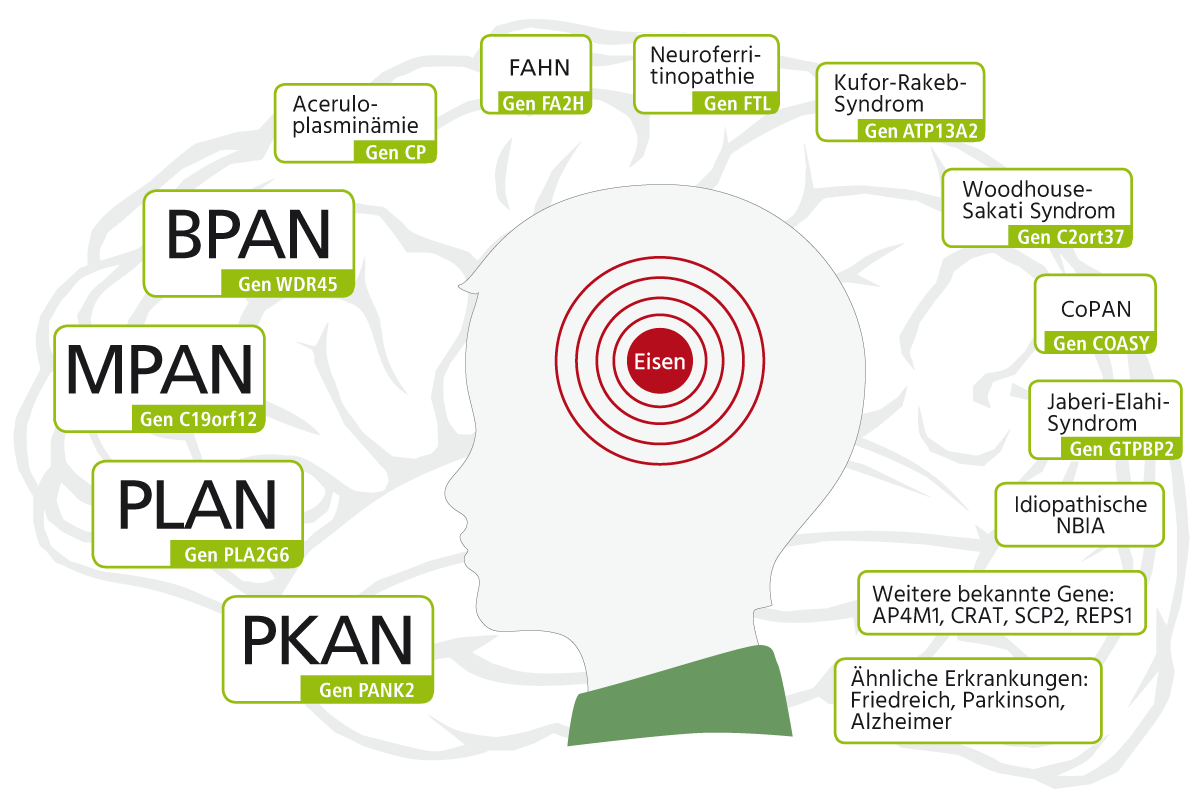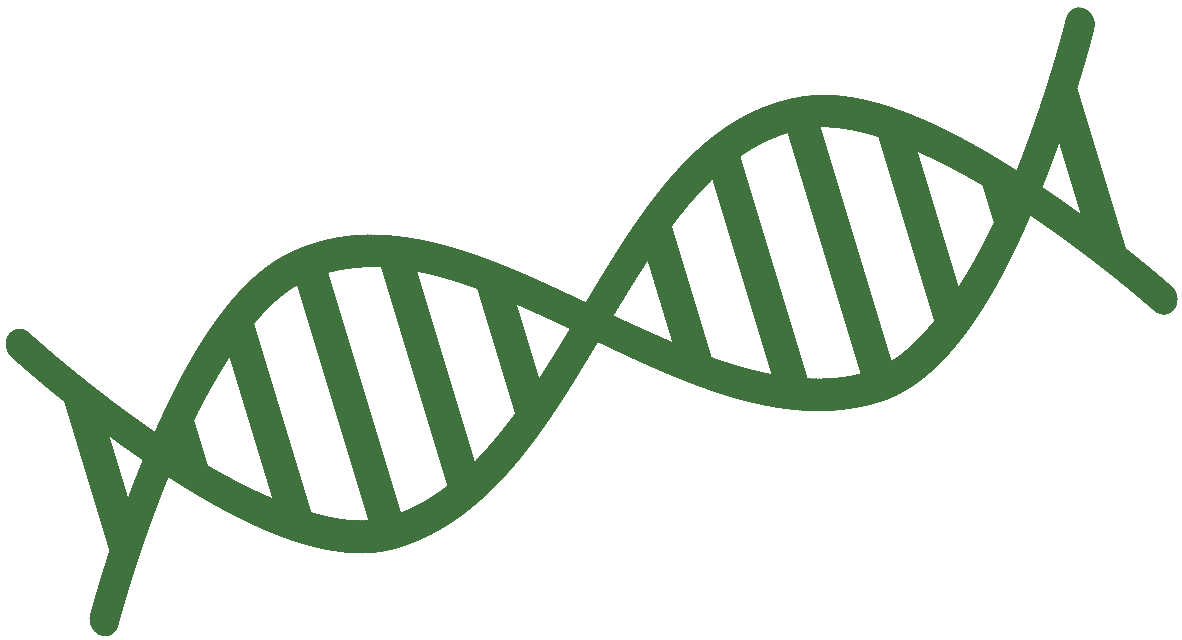
What is NBIA?
NBIA stands for neurodegeneration with iron storage in the brain. Neurodegeneration with Bbalk IRon Accumulation) and is the generic term for a group of progressive and hitherto incurable neurological diseases, which usually begin in childhood or adolescence and are genetically determined. To put it simply, NBIA diseases can be thought of as a mixture of Parkinson's disease and dementia in childhood. In those affected, this manifests itself in progressive movement and developmental disorders. Very rarely, the first symptoms do not appear until adulthood.
Neurodegeneration means the loss of nerve cells. All NBIA diseases are also characterized by an abnormal iron deposit in the brain nuclei, the so-called basal ganglia. These are responsible, among other things, for regulating exercise. The relationship between iron accumulation and symptoms is not yet fully understood. Other metabolic processes specific to each NBIA disease are probably of greater importance.
Developmental and movement disorders, behavioral problems, cognitive impairments, vision or speech disorders or epilepsy can be the first signs, depending on the NBIA disease. Clinical suspicion of NBIA is confirmed and specified by genetic testing or MRI imaging. If you have just learned of an NBIA diagnosis, please also read this specific information: Newly diagnosed
Many patients develop pronounced dystonia. These are involuntary cramps of the muscles, which lead to poor posture and overmovements. Spasticity, ataxia, chorea, neuropathy, and parkinsonism can also occur in varying degrees of weighting. The movement disorders usually lead to the need for a wheelchair. The speech and swallowing disorders can cause breathing and feeding problems. Retinal or optic nerve degeneration, severe epilepsy as well as psychiatric difficulties up to dementia are possible depending on the NBIA disease.
NBIA is progressive, sometimes with prolonged disease arrest between short periods of rapid deterioration. As the disease progresses, complications can occur and life expectancy is significantly shortened. There are currently only limited effective therapies, especially for muscle relaxation, which may provide temporary relief, but do not stop the progression. For PKAN, there are initial clinical trials with drugs that target the cause of the disease (see Currently > research).
The graph shows the currently known NBIA diseases, each of which is due to a mutation in a different gene. With an estimated prevalence of less than 10 sufferers per 1 million, NBIA is very rare. The four most common NBIA disorders are BPAN, PKAN, PLAN, and MPAN. Only a small proportion of those affected carry mutations in one of the other known genes or the cause of iron storage in the brain is still completely unknown (idiopathic NBIA).
Each NBIA disease has a different characteristic course of the disease with different pronounced, but sometimes similar symptoms, because because different genes are affected, different metabolic processes are also disturbed in each NBIA disease.
Click on an abbreviation in the graph for specific information about each NBIA condition. For basic information on the inheritance of NBIA, see: Genetics
Overview of NBIA disorders
Click on an abbreviation in the graphic!

Genetics
Here you will find basics on genetic questions related to NBIA diseases.
Publications and information material
Hoffnungsbau e.V. provides well-founded information in its own publications and as information material.

